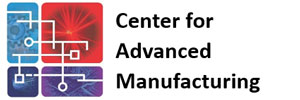Navajo Technical University has been steadily increasing its capacity to provide quality science, technology, engineering, and mathematics (STEM) education to Native American students since it was founded in 1979. The University is a fully accredited institution of higher learning that offers certificate programs for job preparedness and associate, baccalaureate, and graduate degrees to a student body that primarily consists of Navajo tribal members, but also serves other populations, such as Pueblo and Ute students, in Northwest New Mexico and Eastern Arizona. Students that attend NTU come from an Arizona Navajo economic landscape that features a high unemployment rate and a poverty rate near 42%. As a result, many of the people and the communities in which they reside are trapped in cycles of poverty that have limited their ability to access resources needed in order to sustain a healthy way of life.
In 2012, with partial funding from NSF and NASA, Navajo Technical University established a Fabrication Laboratory (Fab Lab) in the Center for Digital Technologies to support STEM education by providing the personnel and equipment for engineering projects, research, fabrication, software modeling services, and hardware and software training and support. Industry demands that graduates from engineering programs know how to utilize new technologies within the engineering disciplines, along with theoretical mathematics-based courses. NTU’s Fab Lab provides a platform for project-based, hands-on STEM education. Students learn by designing and creating objects relevant to their course of study. Empowered by the experience of making something themselves, they both learn and mentor each other, improving understanding of basic principles and gaining knowledge about the technologies, machines, materials, design process, and engineering that goes into invention and innovation. Rather than relying on a fixed curriculum, learning happens in an authentic, engaging, personal context, one in which students go through a cycle of imagination, design, prototyping, reflection, and iteration as they find solutions to challenges or bring their ideas to life. Examples of Digital Manufacturing student projects include capturing the current state of the Navajo Nation Council Chambers for historical preservation and then working to upgrade the space for more efficient use, and assisting a company, Business Environments, with exploring ways to use data for better efficiency in their workflow.
Navajo Technical University’s institutional strategic plan includes priorities that leverage the commitment to economic development on the Navajo Nation. Advanced Manufacturing at NTU strives to stay in front of the industry by offering education, research and prototype service for the Navajo students, for the AM industry and for the partners and clients waiting for opportunities to enter more comprehensive solutions to AM needs. This initiative is being driven by revenue generation challenges on the Navajo Nation, due mainly to decline in coal markets which provide ~ 1/5 of NN budget. One of the top priorities of the Navajo Nation administration is to replace these revenues and job losses.
The fundamental vision of the of the Center for Advanced Manufacturing is to develop a Center of Excellence in advanced manufacturing technology and to provide the Navajo Nation and New Mexico the tools to be a leader in the industry as well as in research and development of Advanced Manufacturing. The four priorities of the plan are: Education Support, Research, Industry Partnerships, and Economic Development. The Center for Advanced Manufacturing will develop a Navajo workforce, serving the needs of the Center, and also providing sustainable educational programs, research and technology transfer opportunities. Navajo students, both K-12 and college can move through the experiential learning from the Center, while beginning their own work experience both at NTU and with industry partners.
